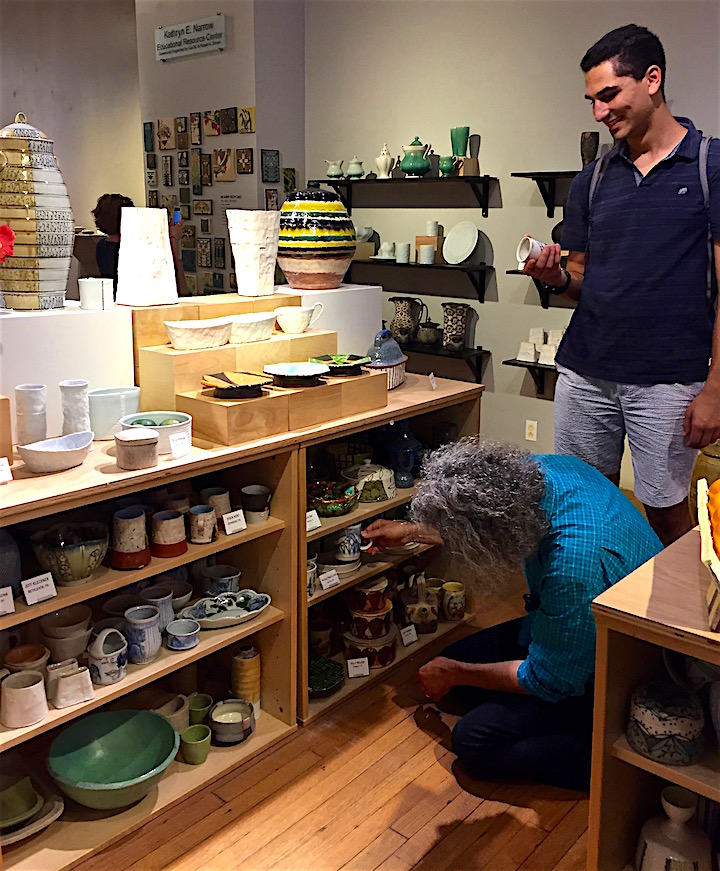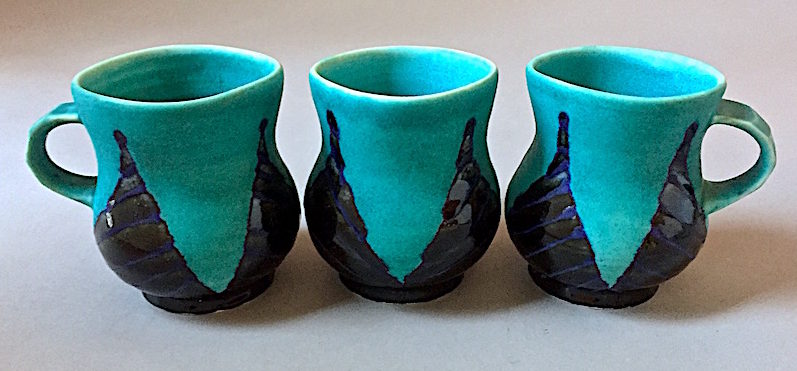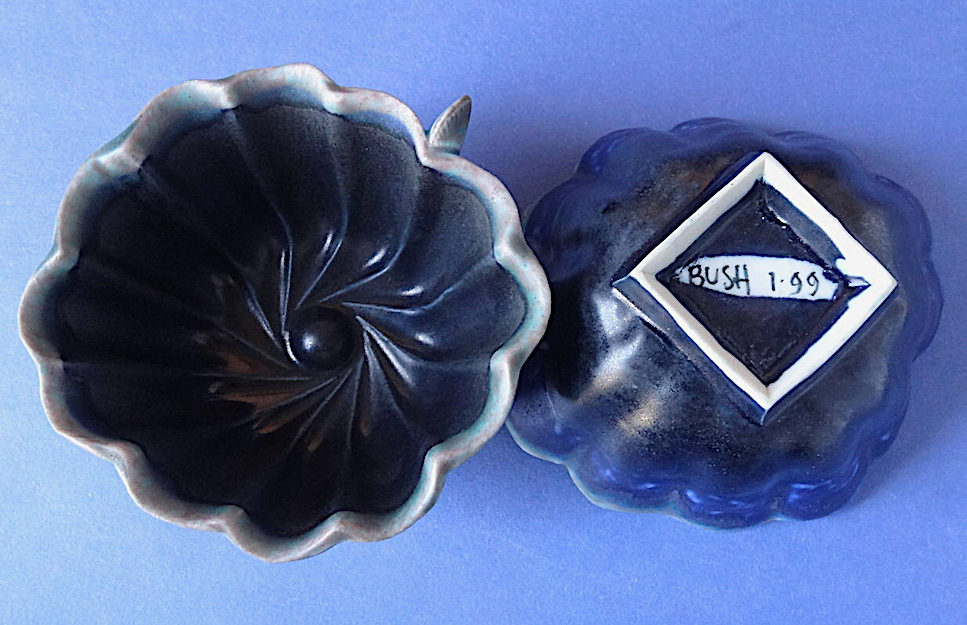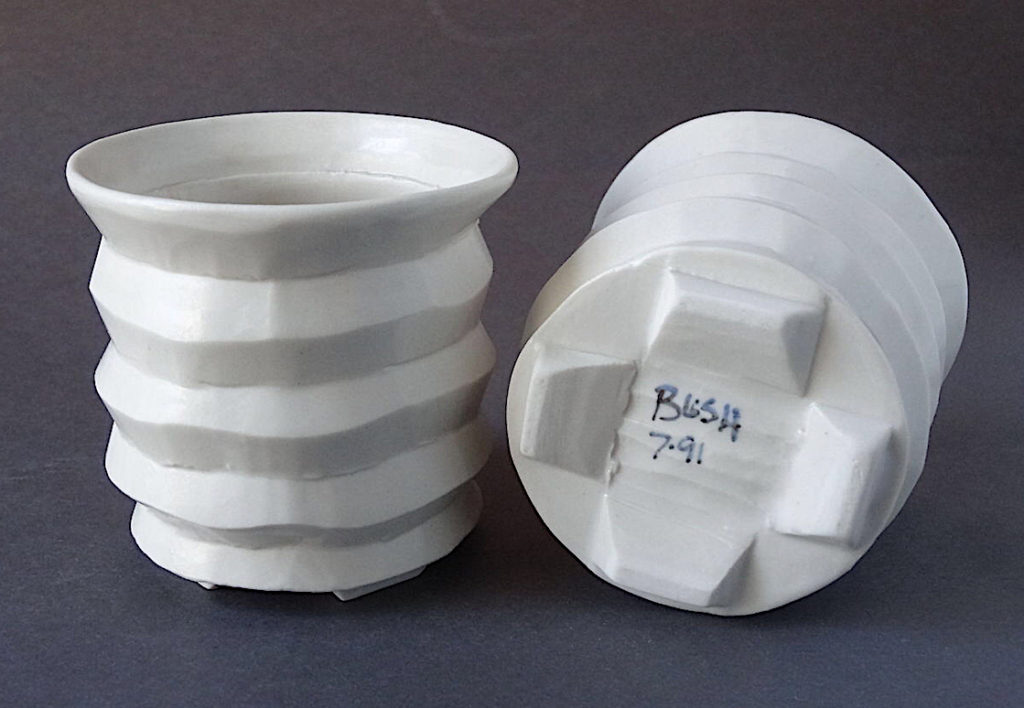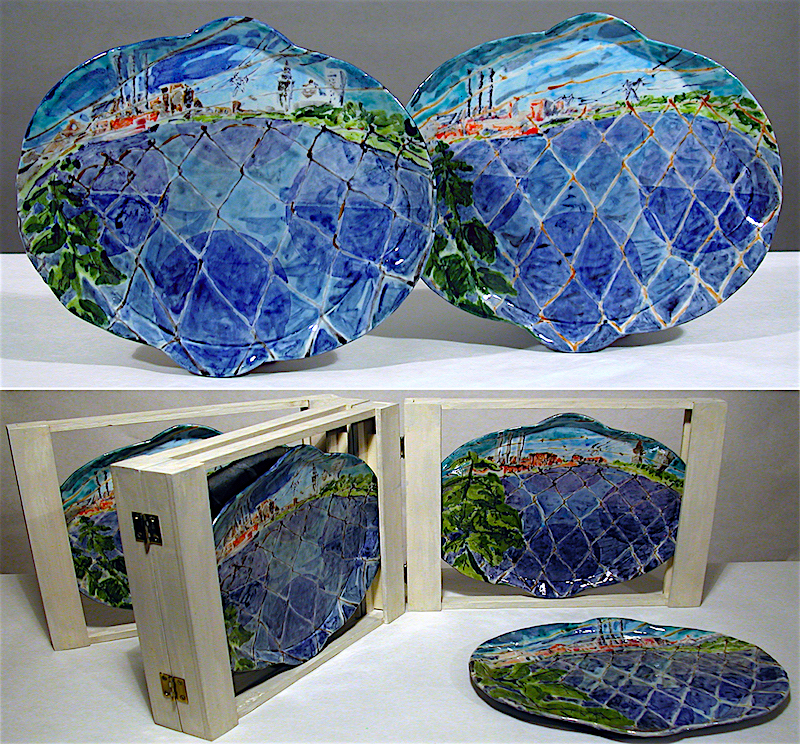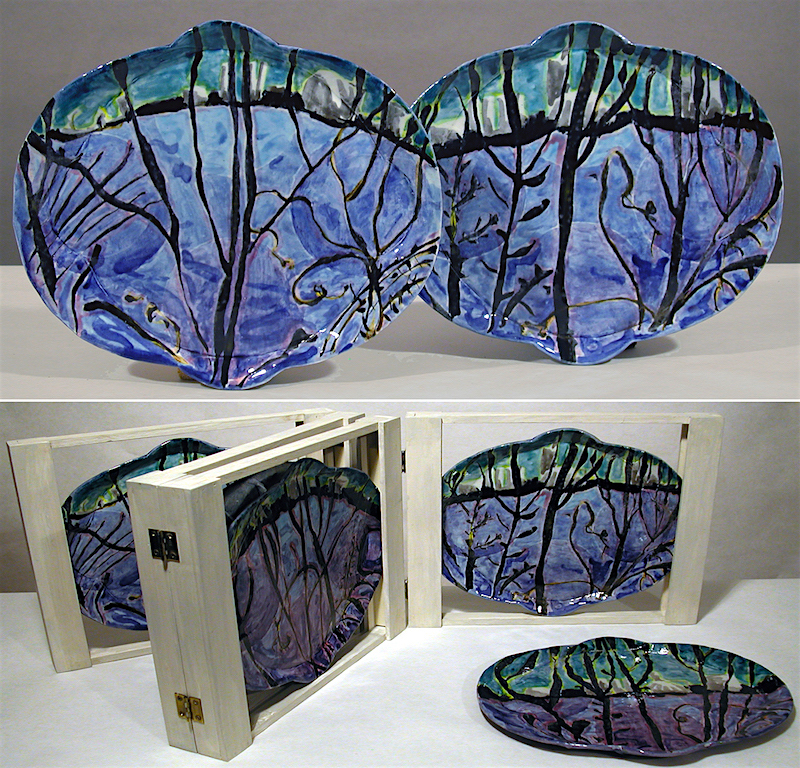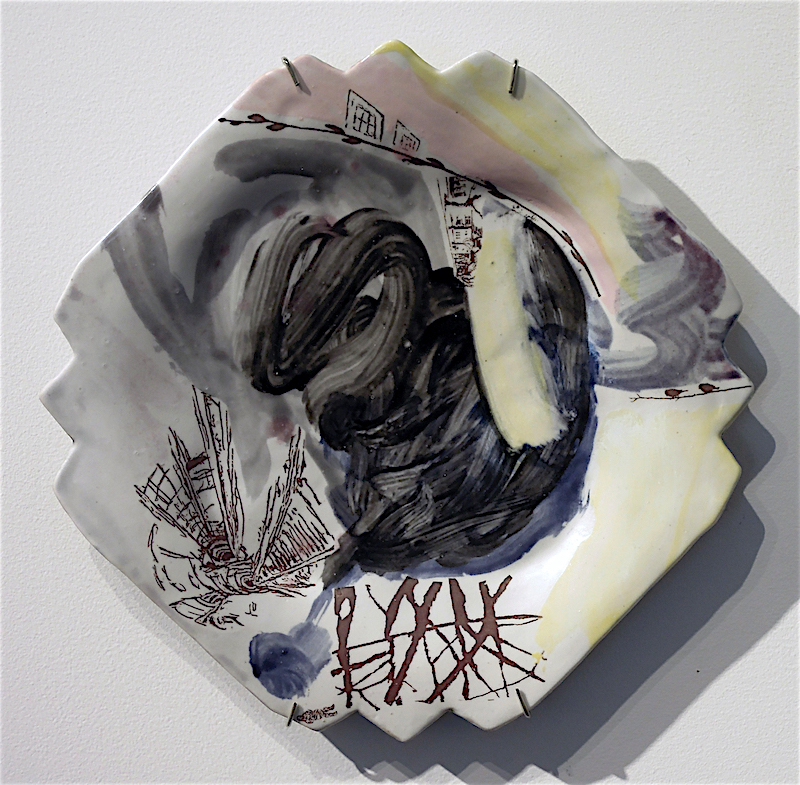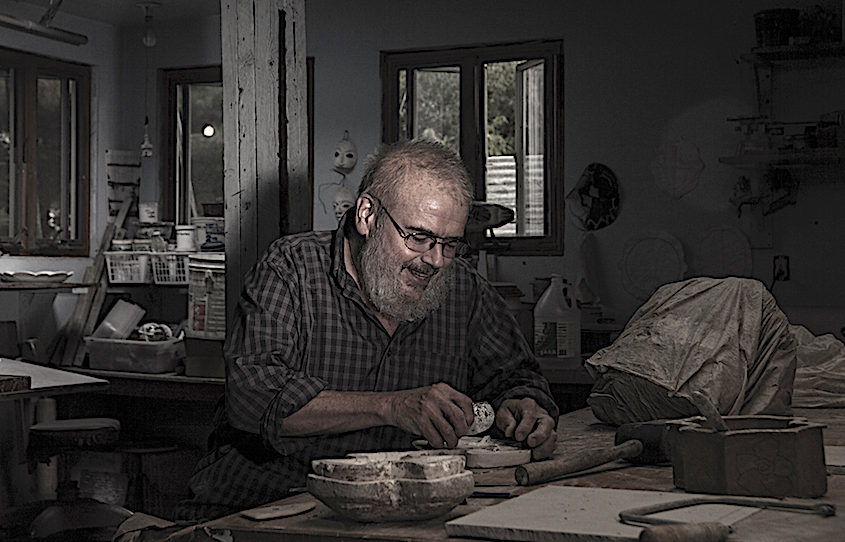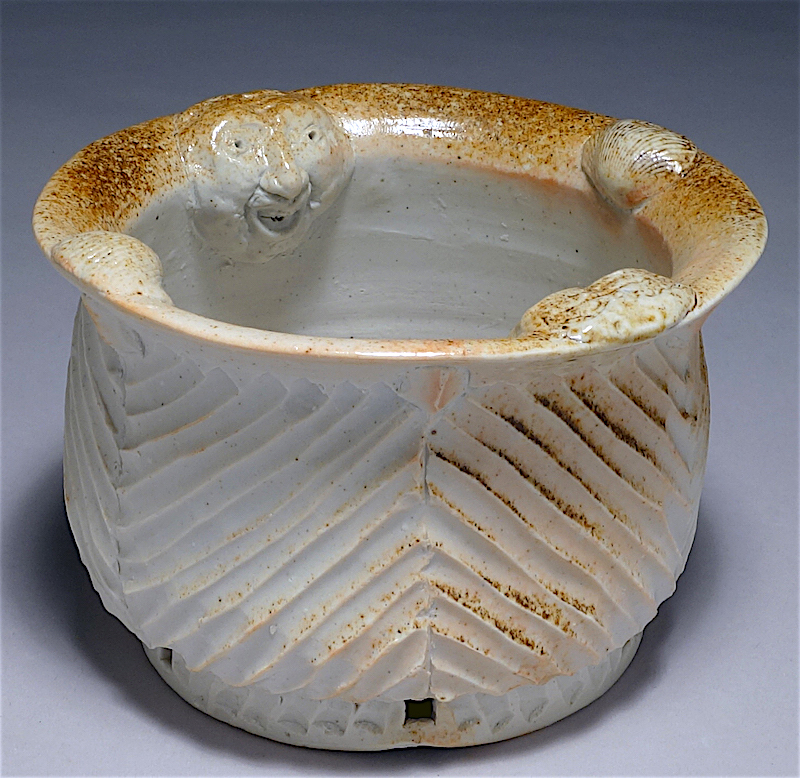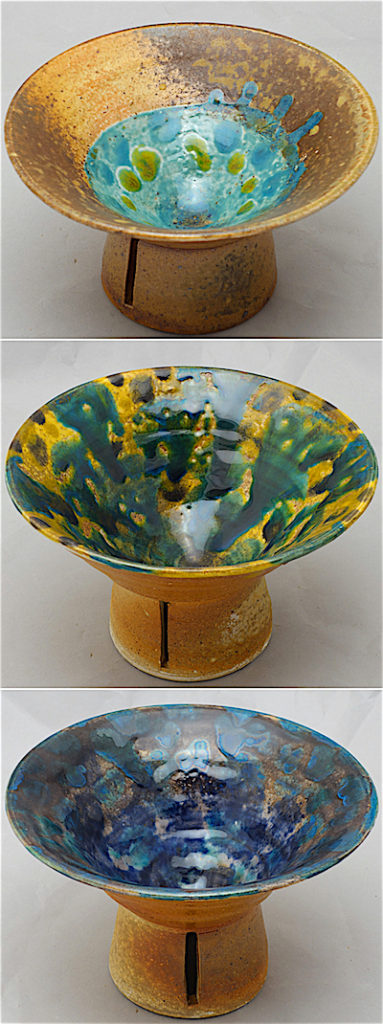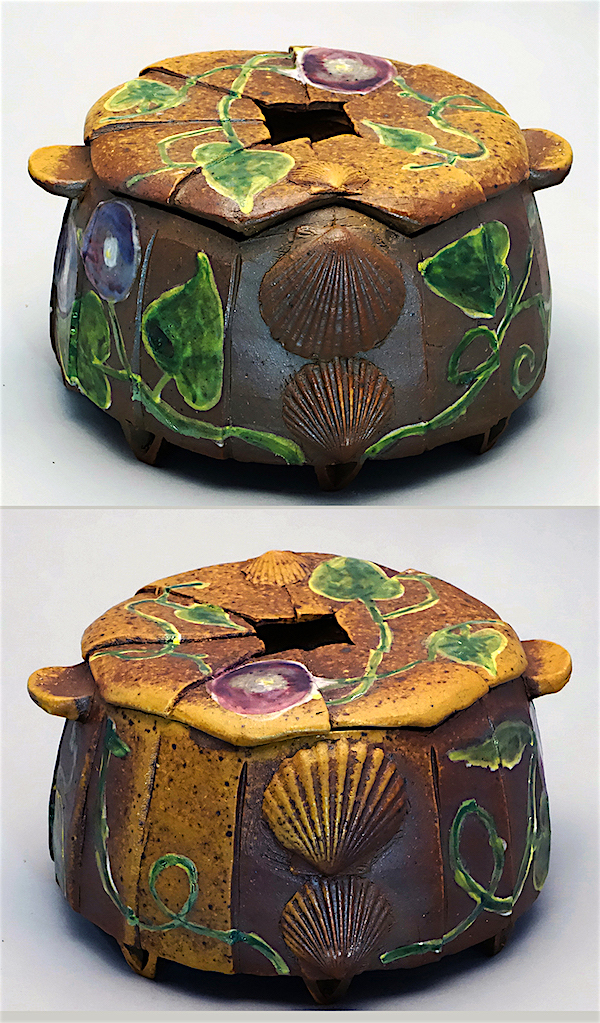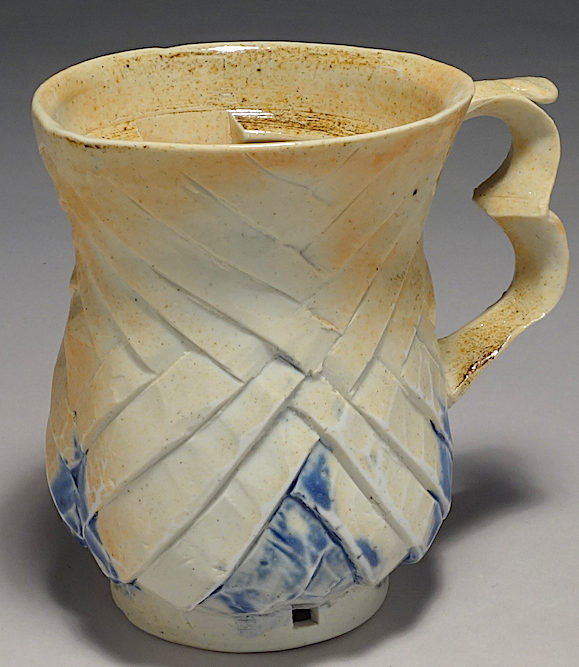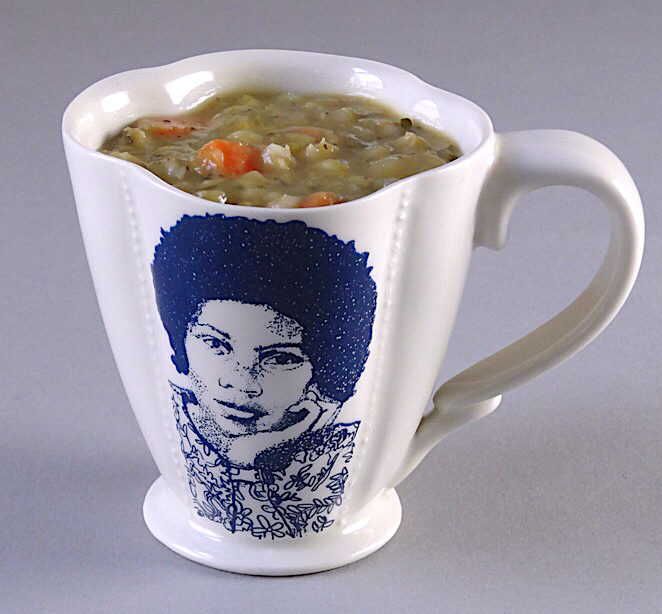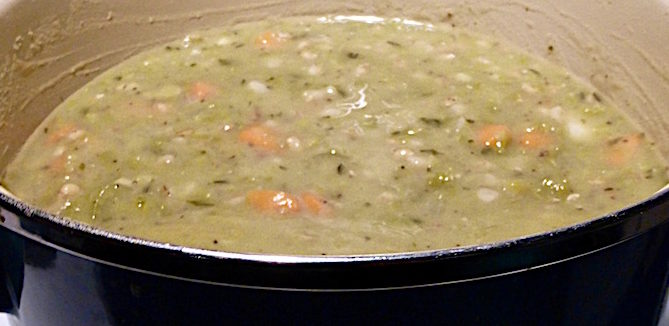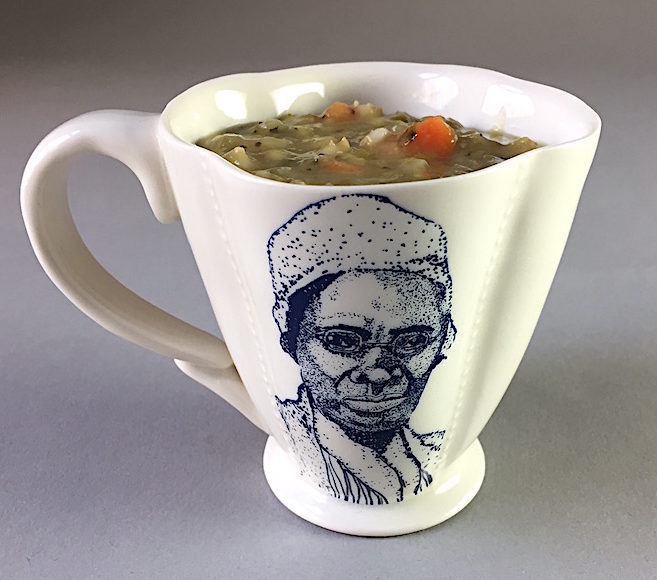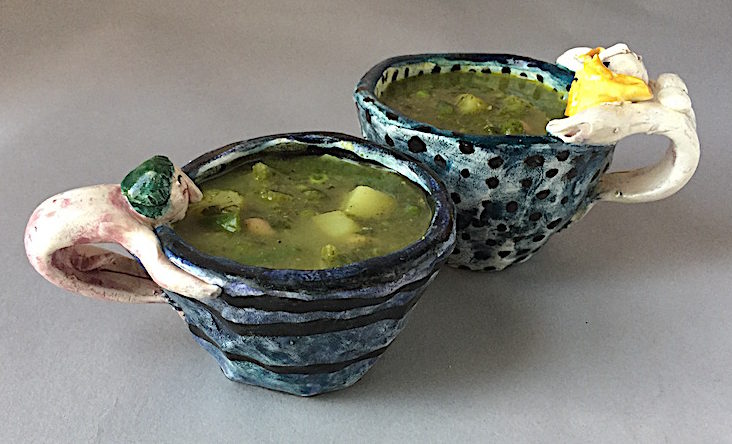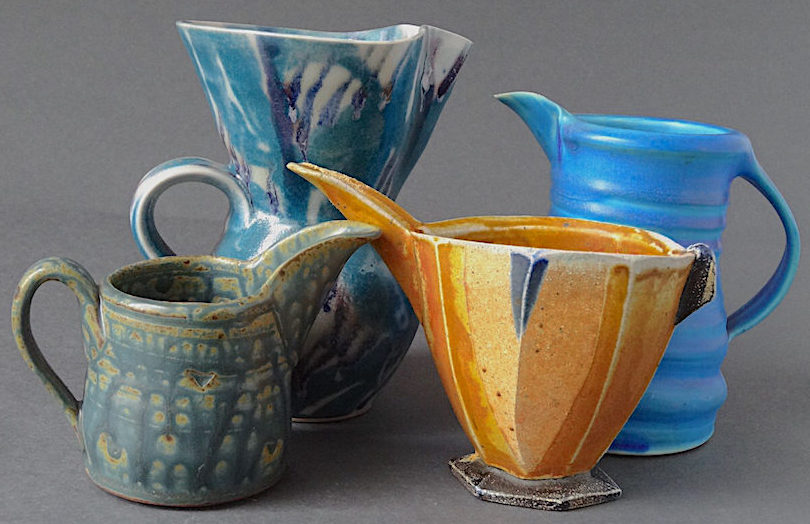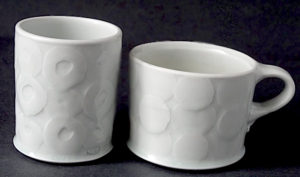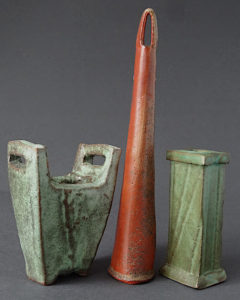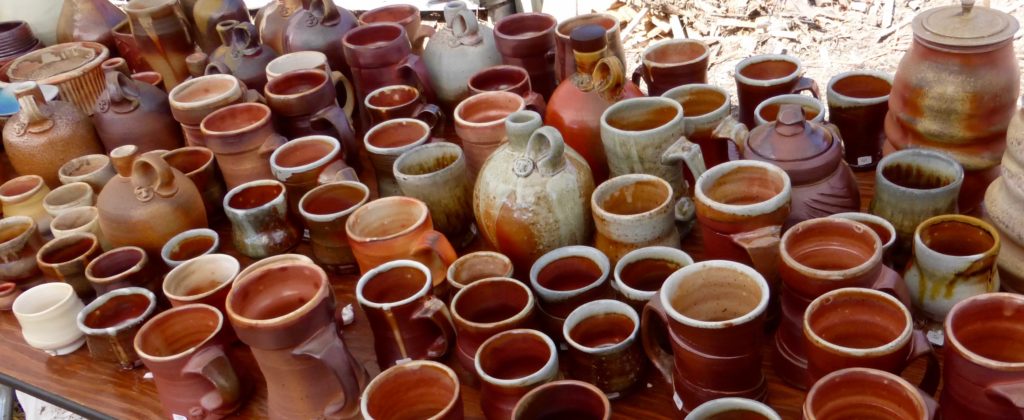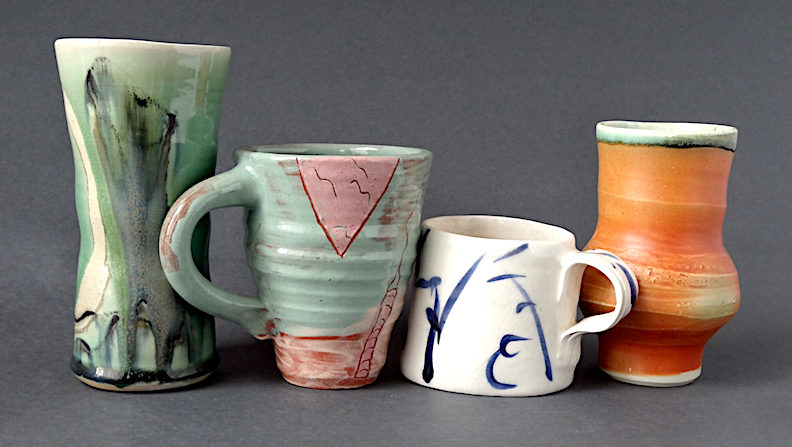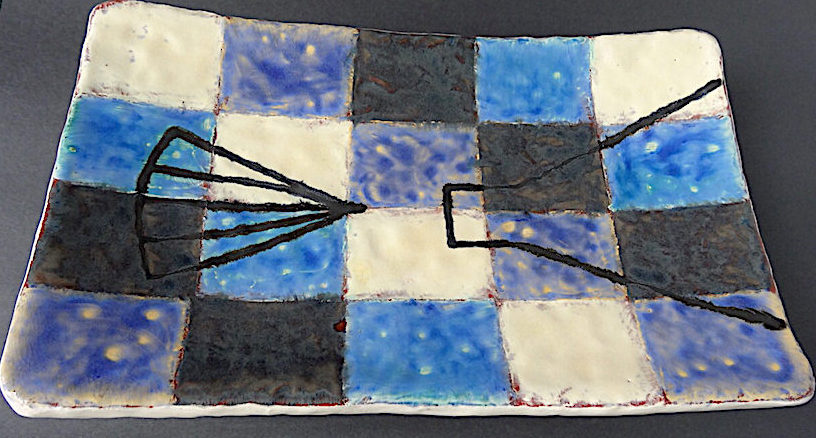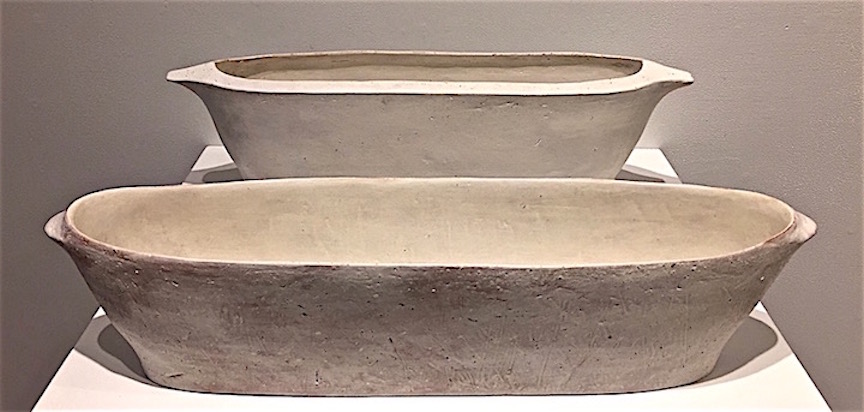
One of the pleasures of the holiday season, besides the lights, store windows, Tuba Christmas at Rockefeller Center, baking and the sense that people are generally cheerier than usual, is the handmade pottery that is available to buy at the many holiday ceramics and craft sales! Wherever you live, this is a great time of year to find handmade pots for sale.
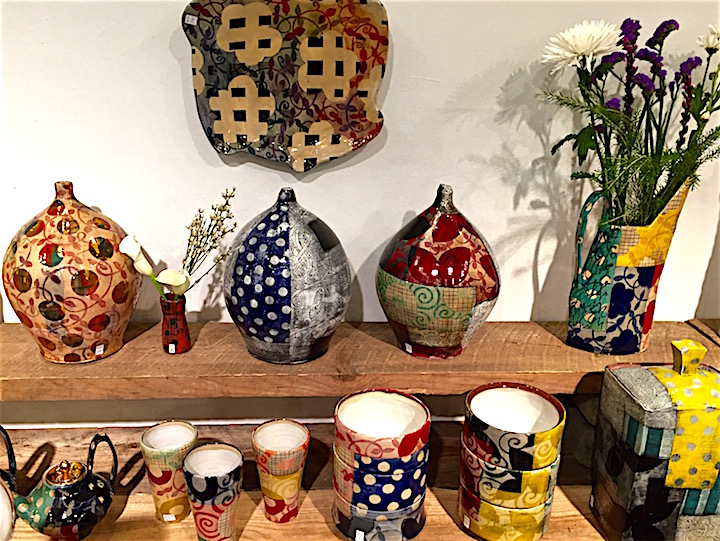
As I noted in an earlier piece on pottery, New York has become a difficult place to find and buy ceramics. There are still a few outlets but many, many less than there used to be. Fortunately for New Yorkers, the holidays bring potters and pots to the city and nearby and, since it is 2017, there are many, many online holiday sales. Handmade pots are more expensive than the commercial variety for many reasons so remember that when you hesitate at their cost. Their price includes not just the materials but the time involved in making, glazing, twice firing, shipping and the cut taken by the place where it is sold to say nothing of this time it took to come up with the forms and decoration in the first place. They make great gifts, if you can stand to part with them. The pots you do keep, you will appreciate every time you use them.
Here are a few of the sales that I found and are tempting me this year:
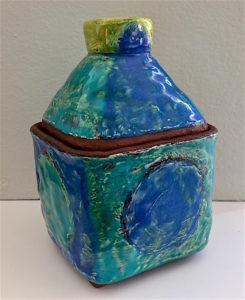
- The 62nd Annual Show & Sale has already started at Wesleyan Potters, one of the tri-state areas best known source for pottery. Their sale includes the work of dozens of local and national potters alongside that of some jewelers and textile artists. It continues through December 10th in Middletown, CT
- The Clay Holiday Annual Sale at Clay Art Center in Portchester (yes, you can take Metro North) is an exhibit and sale of work by both Westchester and national potters and includes a wall of clay ornaments. It continues through December 23rd.
- This Saturday, December 2nd, more than 50 artists will be selling work at Made in Clay 2017 at Greenwich House Pottery downtown from 12-7. From 5-7 there will be an opening of the wonderful wood-fired pottery of Naomi Dalglish and Michael Hunt from Bandana Pottery in North Carolina.
- Also on Saturday, from 11-6, Hand Crafted Holidays will take place at The Clay Studio in Philadelphia. Along with tastings, demonstrations and hands on activities, there will be special discounts in their well stocked shop.
- The 43rd Annual Pottery Show & Sale at the Art School at Old Church in Demarest, New Jersey is one of the best opportunities near NYC to see and buy pots from 30 known and respected potters from around the country. Friday evening is a fundraiser and party and the sale continues Saturday 10-5 and Sunday 11-4 with a suggested donation of $10.
- 2017 Native Art Market at the Smithsonian’s National Museum of the American Indian may be best attended for its jewelry but there will be ceramics from several pueblos including Jerez and Santo Domingo among others. The preview party is Friday evening and tickets can be purchased in advance. Saturday and Sunday admission is free.
- If you live in or will be in Boston, Crafts Boston 2017, sponsored by the Society of Art & Crafts, will be at the Haynes Convention Center. Among artists working in other media are several wonderful potters. The show runs December 1-17 and costs $15.
- And if you find yourself in Rhode Island, The Art Providence Holiday Show at the RI Convention Center, continues the tradition of the RISD alumni show featuring over 200 artists in many media. December 9-10, $8 per day and a preview party on Friday, December 8th is $100.
Online sales can be ongoing or confined to certain dates. Many clay artists have websites and others sell through galleries or on Etsy. These are just a few that I like:
- archiebrayfoundation.org
- santafeclay.com
- objectiveclay.com
- store.northernclaycenter.org
- charliecummingsgallery.com
- schallergallery.com
- penland.org
- theclaystudio.org
- bandana-pottery.myshopify.com
Support good handmade pottery and the potters who make it by buying their work!
